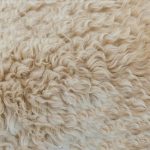Are you unsure if your beautiful silk fabric will bleed when it’s washed? Don’t worry, we’ve got you covered.
In this article, we will guide you through the process of checking if your silk fabric bleeds. By understanding the importance of this test and following our step-by-step instructions, you’ll be able to determine if your silk fabric requires special care.
So let’s get started and ensure that your silk stays vibrant and flawless!
Table of Contents
Understanding the Importance of Checking for Bleeding
You should understand why it’s important to check if your silk fabric bleeds.
Before you start working with your silk fabric, it is crucial to pre wash it. This step helps remove any excess dye or chemicals that may cause bleeding later on. By pre washing your silk fabric, you can prevent any unwanted color transfer or staining that could ruin your project.
Additionally, it is essential to identify the causes of bleeding in silk fabric. Some common causes include poor dyeing techniques, low-quality dyes, or inadequate fixing of the dye. By understanding these causes, you can take necessary precautions to prevent bleeding or minimize its impact.
Checking for bleeding in silk fabric is vital to ensure the longevity and quality of your project. It allows you to take necessary steps to prevent any potential damage or discoloration. So, always remember to pre wash your silk fabric and identify the causes of bleeding to ensure a successful and long-lasting outcome.
Selecting the Right Testing Method
Looking for ways to prevent dye bleeding?
In this discussion, we will explore effective techniques to prevent dye bleeding, reliable colorfastness indicators to ensure long-lasting colors, and the best testing equipment options to accurately assess colorfastness.
Dye Bleeding Prevention Techniques
To prevent dye bleeding on silk fabric, it’s important to follow these techniques:
-
Use cold water: When washing silk fabric, always use cold water instead of hot water. Hot water can cause the dye to bleed and result in color fading or staining.
-
Hand wash or gentle cycle: Avoid using a washing machine with a strong agitation cycle as it can cause the dye to bleed. Instead, hand wash the silk fabric gently or use the delicate/gentle cycle on your washing machine.
-
Test for colorfastness: Before washing a silk fabric for the first time, it’s crucial to perform a colorfastness test. Dampen a white cloth with water and gently rub it on a hidden area of the fabric. If the dye transfers to the cloth, it indicates poor colorfastness, and extra care should be taken to prevent bleeding.
Reliable Colorfastness Indicators
Reliable colorfastness indicators can help determine the likelihood of dye bleeding on silk fabric. When it comes to colorfastness testing, these indicators play a crucial role in ensuring the durability and longevity of your silk garments.
By using these indicators, you can assess how well the dye will hold up over time and avoid any potential bleeding issues. This is especially important when caring for delicate fabrics like silk, as bleeding can ruin the appearance and quality of the fabric.
By conducting colorfastness tests and paying attention to these indicators, you can take proactive steps to prevent dye bleeding and maintain the vibrant colors of your silk garments.
Best Testing Equipment Options
When it comes to testing equipment options, you’ll want to consider the accuracy and ease of use before making a decision. Here are three cost-effective options from reliable testing equipment suppliers:
-
Digital Colorimeter: This handheld device measures the color of the fabric accurately and quickly. It provides precise color analysis, making it ideal for colorfastness testing.
-
Martindale Abrasion Tester: This machine assesses the durability and resistance of the fabric to abrasion. It simulates everyday wear and tear, ensuring the fabric’s quality.
-
Perspirometer: This equipment evaluates the fabric’s resistance to perspiration, making it suitable for sportswear or other garments that come into contact with sweat.
Gathering the Necessary Materials
When it comes to testing silk fabric for bleeding, there are a few key points to keep in mind.
First, you’ll need the right testing equipment, such as pH strips and a white cloth. These tools will help you accurately assess whether the fabric is bleeding or not.
Secondly, proper fabric handling is essential to ensure accurate results. Handling the fabric with clean hands and avoiding excessive rubbing or stretching will help maintain the fabric’s integrity during the testing process.
Required Testing Equipment
To check if your silk fabric bleeds, all you need is a simple testing equipment. Here are three items that will help you in the testing process and ensure measuring accuracy:
-
Cotton swabs: These are essential for collecting samples from the silk fabric. Gently rub a cotton swab on the fabric to see if any color transfers onto it.
-
Water: Use water to wet the cotton swab before rubbing it on the fabric. This helps in determining if the fabric bleeds when exposed to moisture.
-
White cloth or paper towel: Place a white cloth or paper towel underneath the fabric while performing the test. This will help you spot any color bleed more easily.
Proper Fabric Handling
Ensure you handle your fabric properly to avoid any potential damage or misshaping. When it comes to fabric care and silk maintenance, proper handling is crucial.
Start by washing your hands thoroughly to remove any oils or dirt that could transfer onto the fabric. Gently unfold the silk and lay it out flat on a clean surface. Avoid pulling or stretching the fabric to prevent any distortion.
When cutting the fabric, use sharp scissors to ensure clean and precise edges. Additionally, be cautious when ironing silk as it is delicate and can easily be damaged by excessive heat. Always use a low heat setting and place a pressing cloth between the iron and the fabric to protect it.
Conducting the Water Test
You can easily conduct the water test to check if your silk fabric bleeds. This test is a simple and effective way to determine the colorfastness of your silk fabric.
Here’s how you can do it:
-
Prepare a small sample of your silk fabric. It’s best to use a piece that is about 2 inches square.
-
Fill a basin or sink with lukewarm water. Make sure the water is not too hot or too cold.
-
Gently submerge the silk fabric into the water and let it soak for about 10 minutes. This will allow the fabric to absorb some water.
If the water turns color or you notice any dye bleeding from the fabric, it means that your silk fabric is not colorfast and may bleed when washed or worn. In this case, it’s best to avoid washing the fabric or wearing it with other light-colored garments.
On the other hand, if the water remains clear and there is no color bleeding from the fabric, it means that your silk fabric is colorfast and can be safely washed and worn without any risk of bleeding.
Performing the Rub Test
When performing the rub test, be gentle and avoid using excessive force on the silk fabric. This technique is used to determine if the fabric has any color bleeding or transfer.
To conduct the rub test, take a clean, white cloth and dampen it slightly with water. Then, gently rub the cloth against a small, inconspicuous area of the silk fabric. It is important not to apply too much pressure, as this could damage the fabric.
After rubbing for a few seconds, inspect the cloth for any color transfer. If there is no color transfer, it indicates that the silk fabric is colorfast and will not bleed. However, if you notice any color transfer onto the cloth, it means that the fabric is not colorfast and may bleed when washed or come into contact with other fabrics or surfaces.
Remember to interpret the rub test results carefully and consider the specific care instructions for the silk fabric to avoid any potential damage.
Evaluating the Results and Next Steps
To evaluate the results of the rub test and determine the next steps, take note of any color transfer on the cloth and refer to the specific care instructions for the silk fabric. Evaluating the effectiveness of the rub test is crucial in determining the appropriate actions to take.
Here are three key points to consider:
-
Color Transfer: Examine the cloth used in the rub test for any signs of color transfer. If there is noticeable color bleeding onto the cloth, it indicates that the silk fabric is not colorfast and may bleed when washed or come into contact with moisture. This information will help you assess the potential risks and limitations of using the silk fabric.
-
Care Instructions: Consult the specific care instructions provided by the manufacturer or retailer of the silk fabric. These instructions will provide valuable insight into how to handle and clean the fabric to minimize color bleeding and maintain its quality. Follow these instructions carefully to ensure the fabric’s longevity.
-
Next Steps: Based on the results of the rub test and the care instructions, determine the appropriate actions to take. If the fabric bleeds significantly, it may be necessary to avoid washing it or limit its use in specific applications. Alternatively, if the fabric is colorfast and does not bleed, you can confidently proceed with using and caring for it as desired.
Conclusion
In conclusion, checking if a silk fabric bleeds is crucial to ensure its quality and prevent any potential damage. By selecting the appropriate testing method and gathering the necessary materials, you can easily conduct the water test and rub test to determine if the fabric bleeds.
Evaluating the results will guide you in taking the necessary next steps, such as treating the fabric or avoiding certain cleaning methods. Remember to always prioritize the care and maintenance of your silk fabrics to prolong their lifespan.
- How Does Ring Spun Cotton Affect Garment Fit and Shape Retention? - August 13, 2024
- What Are the Challenges in Producing Ring Spun Cotton? - August 13, 2024
- Is Ring Spun Cotton Suitable for Plus-Size Clothing? - August 13, 2024



